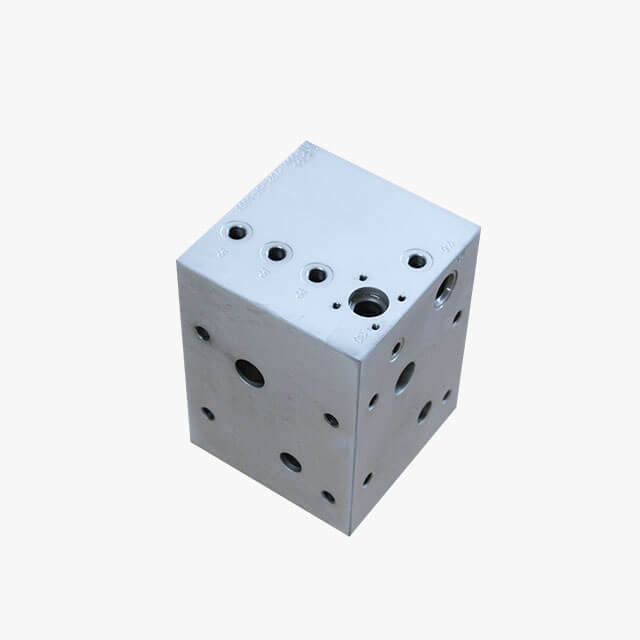Forged aluminum (rated working pressure 3000 psi / 210 bar), aluminum alloy 6061, tempered according to t651 (American Aluminum Association) (ASTM b221, extruded bar).
Ductile iron (pressure rating 5000 psi / 350 bar), grade 65-45-12 (ASTM A 536). The conventional valve blocks are chemically blackened and immersed in oil to prevent corrosion for a short time. The cast iron valve block customized by the valve block manufacturer is soaked in oil before delivery, but it is only chemically blackened when specified by the customer. Note: in order to prevent corrosion for a long time, cast iron valve block needs to be sprayed or plated.
Principle analysis: before manufacturing large-scale integrated valve block, it is necessary to use 3D drawing software to analyze the inner channel structure of the valve block, check and analyze the correctness and rationality of the channel combined with the schematic diagram, and analyze the sequence of channel processing.
The large-scale hydraulic system has the characteristics of high pressure and large flow. The number of integrated valve blocks in the system is large and the volume is large, so the difficulty of processing and manufacturing increases. In addition to the strict dimensional tolerance requirements of Manifold hole, the requirements of inner wall roughness and valve block surface roughness are also strict.
Process flow: the material of integrated valve block for high pressure and large flow hydraulic system is usually 35 ᦇ steel or 45 ᦇ steel forgings. The technological process is as follows: forging → normalizing → rough milling valve block shape → flaw detection → semi finish milling shape → marking → drilling → boring Manifold hole and deep hole → rolling each Manifold hole → drilling other holes of valve block and reaming fine thread → finish milling valve block surface → grinding valve block surface → deburring valve block hole channel → rough flushing machine flushing → nickel plating → fine flushing machine flushing → demagnetization, Finished product. The key processes are: locking Manifold hole, rolling Manifold hole, milling valve block surface and grinding valve block surface.
The valve block is generally rectangular in shape and made of aluminum or malleable cast iron. The hair block is distributed with mounting holes, oil holes and connecting screw holes related to the hydraulic valve. The positioning pin hole, common oil hole, connecting hole, etc. in the process of hydraulic valve block processing, in order to ensure that the channel is correctly connected without interference, process holes are sometimes set.
